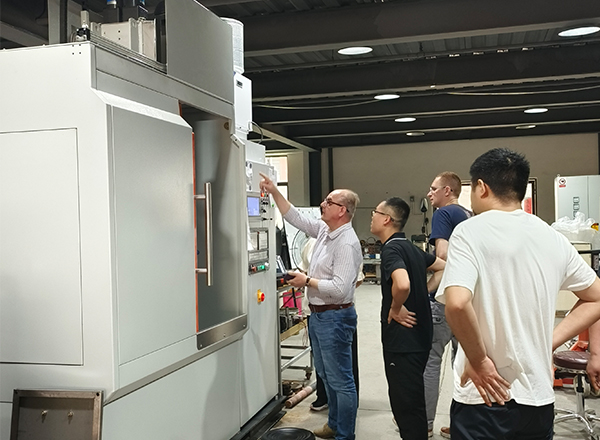
The top is a very important part on the machine tool. In work, it needs to support the workpiece and be subjected to the rotational friction of the workpiece when processing the workpiece. Therefore, the top needs to have higher strength, hardness and wear resistance. In order to meet the needs of the work, carbon tool steel or alloy tool steel is generally selected as the top material. In terms of technology, the quality of its heat treatment is directly related to the precision, processing capacity and whether it can achieve safe production of machine tool products. The steel is processed and formed after spheroidizing annealing, and then quenched by high-frequency induction heating equipment to achieve the required hardness and strength.
During heat treatment, due to the large thickness and complex shape of the top of the machine tool, the quality of the raw materials must be maintained during heating, and preparatory heat treatment and final heat treatment must be done. First of all, normalizing treatment should be carried out before annealing, that is, the treatment of carbonized mesh should be eliminated, otherwise the quenching quality will be affected. Afterwards, the quenching and tempering spheroidization treatment is carried out. After the carbonization net treatment, the billet is placed in the air to cool to about 300°C and placed in the heating equipment in time, and is kept at a temperature of about 600°C for 5 hours. After the coolant is cooled, it is tempered. deal with. Due to the complex shape of the tip, the stress required during quenching is very large, and this part is also prone to cracking. Therefore, we will protect the flange plate with the cement mixed with special filling refractory mud. When quenching the high-frequency induction heating equipment, the tip of the top is downward, and it is fastened with special lifting ring screws, and the temperature is raised through steps. , heat preservation at a temperature of about 400°C for 4 hours, then heat up to 550°C-650°C for 4 hours, and then heat up to 860°C for 8 hours and then cool down. During this process, anti-oxidation treatment must be done. After quenching, it is cooled to a temperature of about 150°C, and then tempered again. When tempering, the heating temperature should reach 200°C and keep it warm for 16-20h. Finally, the inspection is carried out, and the surface of the tip has no cracks after quenching and grinding, so it can be qualified.




 en
en  cn
cn  jp
jp  ko
ko  de
de  es
es  it
it  ru
ru  pt
pt  vi
vi  th
th  pl
pl 



















